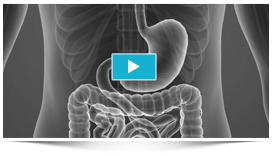Endoscopic Sleeve Gastroplasty (ESG)
When is weight loss intervention recommended?
Weight loss intervention is recommended when excessive weight is endangering one’s health and diet and exercise fail to produce significant results.
What is endoscopic sleeve gastroplasty?
Endoscopic sleeve gastroplasty is the latest weight loss procedure carried out in a minimally invasive manner without making an incision. It has been undertaken for a number of years now and there is up to 2 years of long term published data with weight loss curves mirroring bariatric surgery results.
Who is an ideal candidate for endoscopic sleeve gastroplasty?
Endoscopic sleeve gastroplasty is most suitable for the Class 1 obese patient BMI 30-35.
How is endoscopic sleeve gastroplasty performed?
The procedure is performed under general anesthesia with the help of an endoscope(an illuminated tube with a camera) which is inserted through the mouth to the stomach. Live magnified images from the camera are displayed on a monitor and help your doctor carry out the procedure. The walls of the stomach are carefully examined and instruments passed through the endoscope are used to place a series of stitches on the stomach surface. When tightened, the stitches cause the stomach wall to fold giving it a sleeve like or tubular appearance significantly constricting the space within. The entire procedure takes about 60 minutes and you will usually be discharged home the same day.
What can you expect following an endoscopic sleeve gastroplasty?
Following the procedure, the stomach’s capacity to hold food is significantly reduced causing you to feel full earlier after a meal. The progression of food through the stomach is also slowed down prolonging your satiety and reducing your appetite. You may experience some abdominal pain, nausea or vomiting but these side effects usually last no more than 2-3 days. Complications such as bleeding and infection or perforation are rare. Weight regain can occur if the diet and lifestyle measures are not undertaken.
What follow-up care is necessary following the procedure?
You will have to follow up with your doctor and dietician regularly to check your progress and identify any abnormalities. The stitches are left in permanently with little to no complication. Occasionally stitches may give way due to overeating or vomiting making the procedure less effective. This can however be easily corrected with a re-suture. You will usually be under the care of a team to help you control your diet, improve your lifestyle and prevent weight gain and this is an important part of the management process.
You will need the Adobe Reader to view and print these documents.![]()





